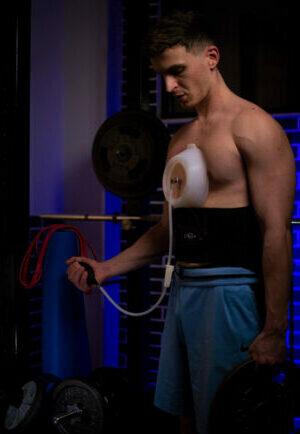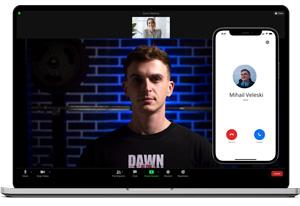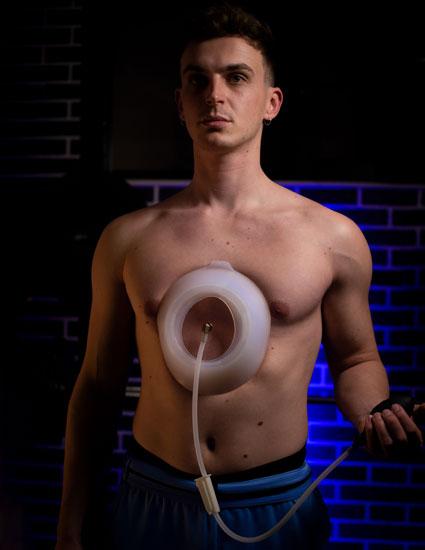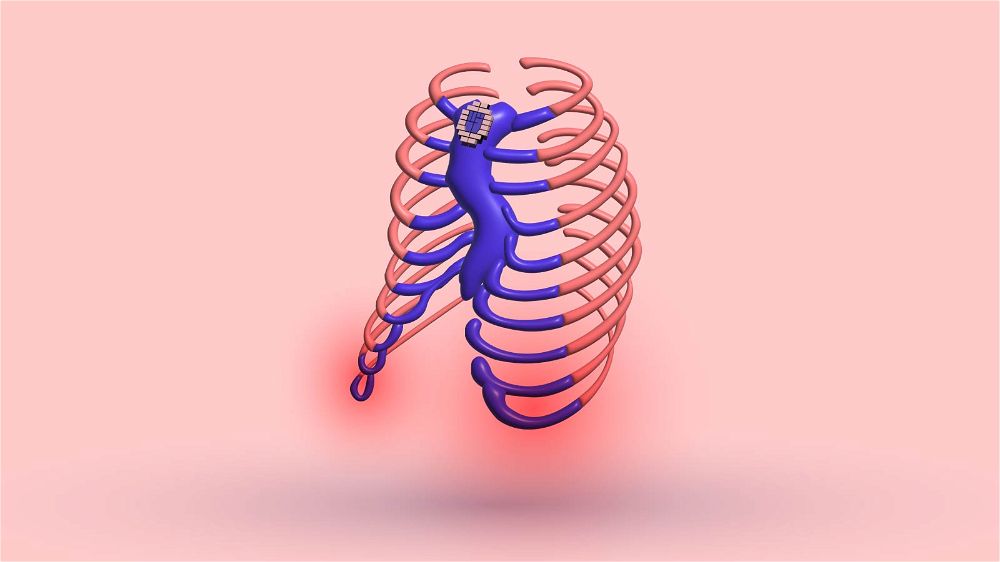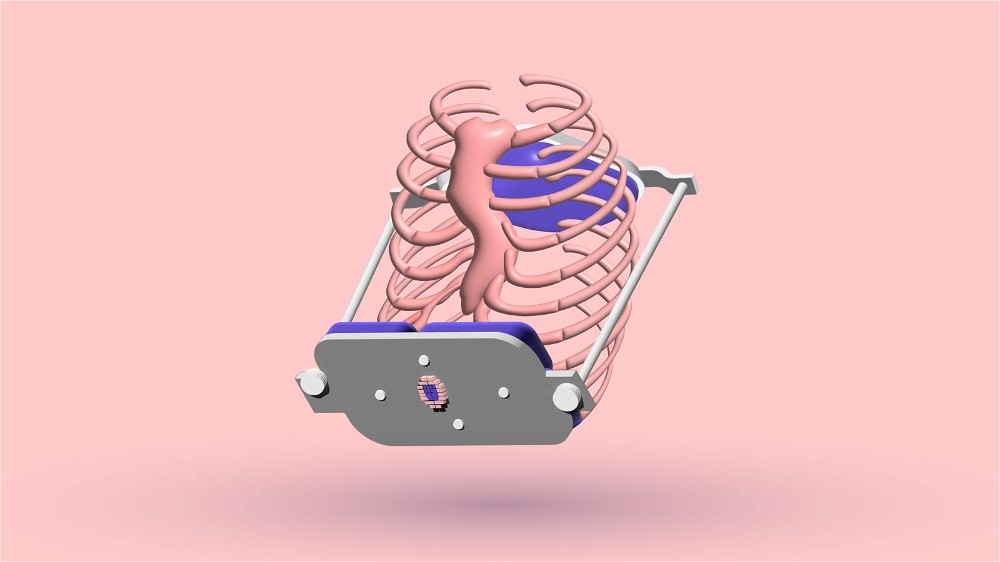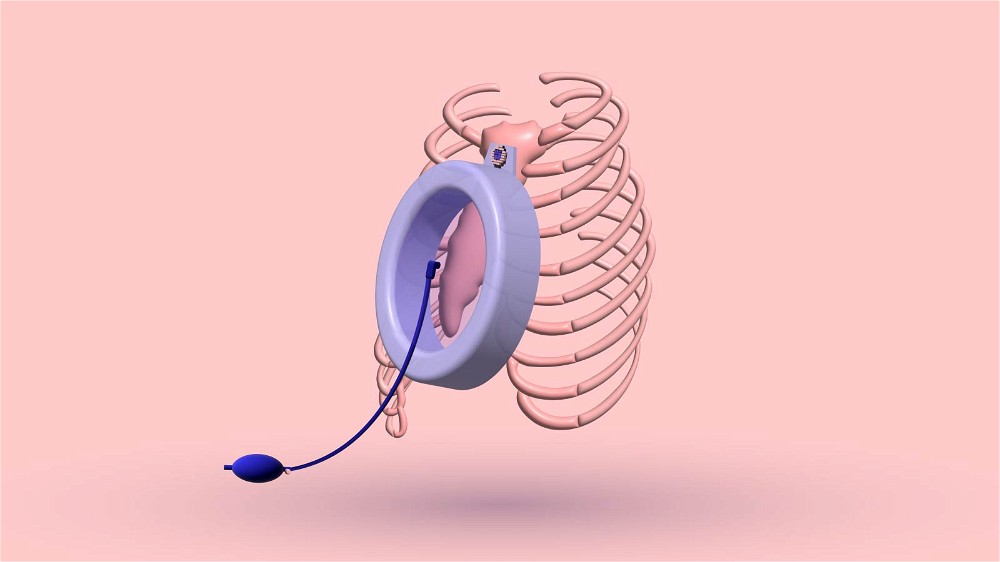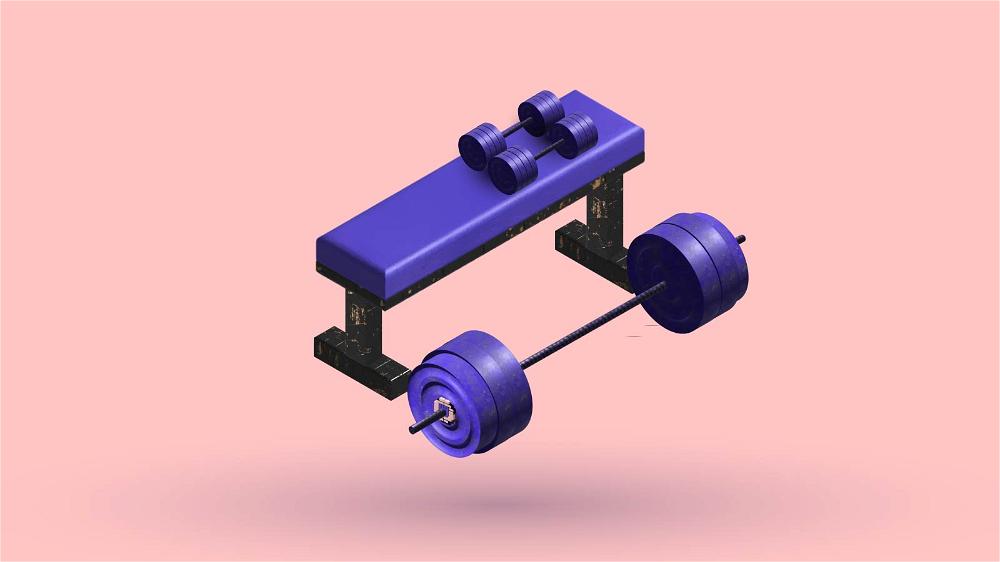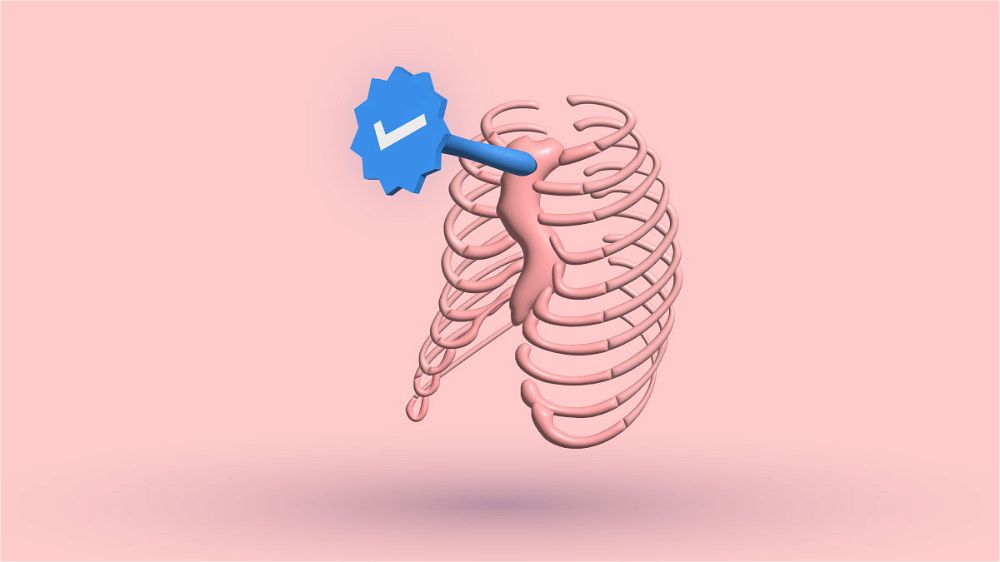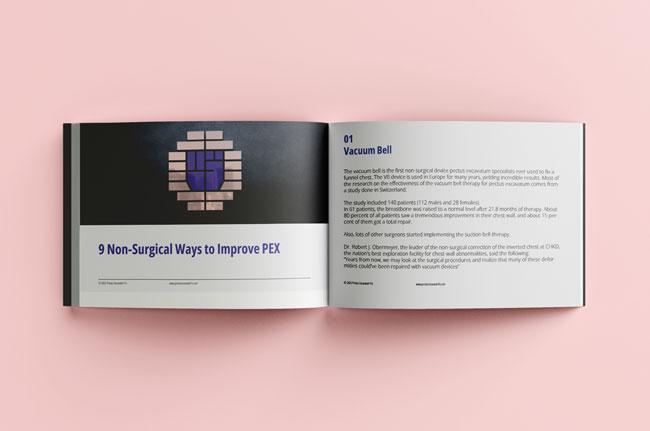Strengthening the core and building muscle mass in the abdominal muscles can make flared ribs and pectus excavatum less noticeable. Your overall upper body appearance will improve drastically.
Usually, the core is the weakest part of us, the people with pectus excavatum. I trained my abs wrong for years, to the point where I experienced lower back pain every time I did ab circuit workouts from YouTube.
Because of that, I hated training my core, and it became the weakest part of my body, making my rib flare much more apparent, even poking through my clothes.
That was until I invested in some of the programs and courses from Elliott Hulse, Mind Pump TV guys, and Athlean X. They talked about this mistake, and I was surprised that I was a victim.
Since correcting that mistake, my rib flare has been almost unnoticeable, and my poor pectus posture is greatly improved. In this article, I want to share exactly how I did that and help you build a solid and functional core and posture.
Biggest Core Mistake I Did
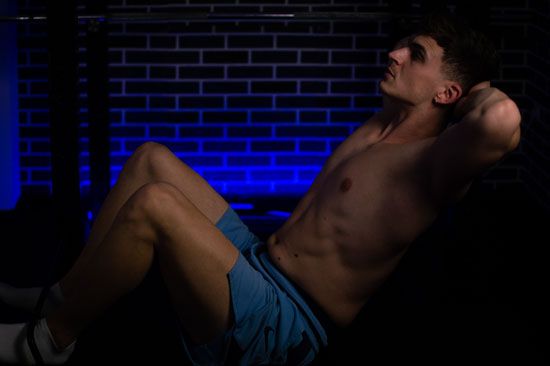
One of the biggest mistakes with abdominal training was that I confused hip flexion and lumbar flexion.
The abs attach to the ribcage and the pelvis. When they contract, they bring those two pinpoints together. If you do a full range of motion ab exercise, like leg raises or reverse crunches, you should aim to get those two points together as much as possible.
Even if you don't do this and move your hips, you will still stabilize with the abs. However, it also doesn't build the abs if you do lumbar flexion. Sorry if it may sound confusing, but I will do my best to explain this to you.
What I Wanted My Abs to Look Like
Despite my rib flare, I wanted to build my abs to the point where they show more at higher body fat percentages. Just like the chest can pop out at the same rate of fat.
I never had a strong midsection, and I tried slowing down the repetitions and focusing on lumbar extension and flexion. I went from the guy with a weak core to the point where when I wore a tight t-shirt, my flared ribs would no longer show, and my abs would pop out of it.
It was all because I was getting a pump in my abs, just like other muscles like the chest. They are just like any other muscle in the body. It isn't ideal to do a hundred repetitions of light movements for the abs.
Use resistance and pick challenging exercises to slow full extension, full squeeze, get the pelvis to touch the flared ribs, then extend back.
What Abs Should Do

You can take your pelvis, tuck it, and stick your butt out when you stand straight. Every time you stick your butt out, that's your abs lengthening. When you fold the tailbone, your abs are contracted. The abs are supposed to do this, not lift the legs to your chest.
What the Hips Do
The abs attach to the bottom of the ribcage and the pelvis. When they contract, it brings the pelvis closer to the ribcage. It rounds the lower back.
Suppose you hang on a pull-up bar and bend the legs 90 degrees without bending at the lumbar spine. That works the hip flexors directly. The abs are just bracing and stabilizing; you may feel them, but you're not performing them properly with a full range of motion.
If you want your abs to contract, you need to rotate at the pelvis so your lower back will start to round. Then you bring the legs up. The abs don't bend you at the hips; many forget about this.
I Hated Core Exercises Because of the Pain
If you do the hip flexion movement, your abs will stabilize, but you will primarily work the hip flexor muscles. Many people with pectus excavatum work their core like that and complain about lower back pain.
I was a victim of this too. I felt back pain while doing abs, and because of that, I wouldn't say I liked core training altogether.
If you want to do reverse crunches properly and focus on the abs, you must bring the knees to your sunken chest while contracting the abdominals. The lumbar spine needs to bend to contract the abs. The last inch of the movements is usually what makes the difference.
The same applies to crunches, leg raises, and ab movements that aren't stabilizers, like planks. Do a full range of motion exercises for optimal ab development. If you bend with the hips, you can create hip flexor dominance and low back pain. When you do abs, your lower back shouldn't hurt at all.
Get In the Correct Position
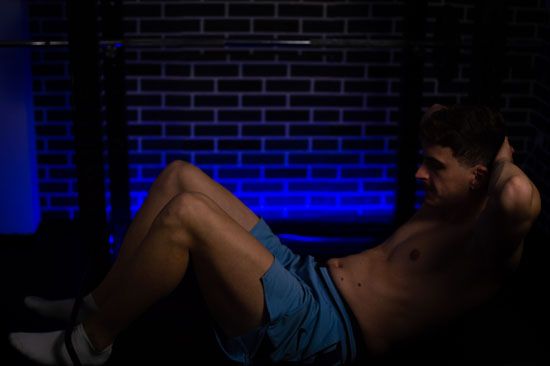
One of the most important things is to get in the correct position before doing ab exercises. If you're a hip flexor and quad-dominant guy and watch an ab exercise on YouTube, you will probably have difficulty connecting the abs, even if you do it exactly like the instructor.
Get Rid of the Arch
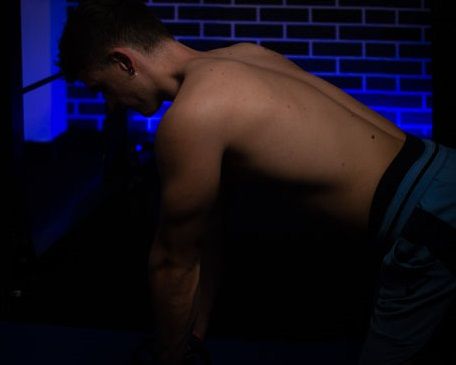
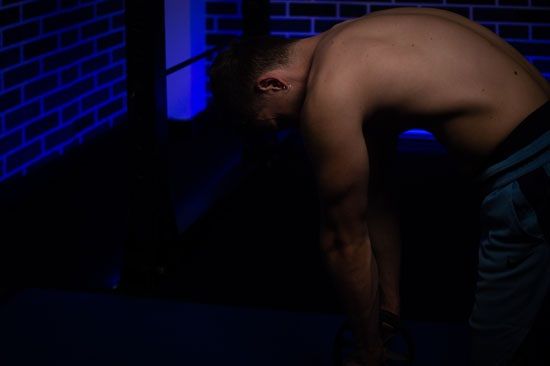
When you get in a crunch position, whether you do a reverse crunch, regular crunch, or variation, you will have a natural arch in the lower back before you do the movement. That's because the pelvis is tilted anteriorly. This will cause your hip flexors to take over this movement more. Get rid of that arch!
Take that space away from your lower back and bench. Tense the core to do this. You will contract your abs just by flattening your back to the bench. Now, take your spine in a neutral position, and you'll be able to squeeze the abs appropriately.
When you press the low back flat, you will bring the belly button to your sunken sternum. Focus on that. Keep the lower back pressed to the bench. That applies even if you do regular crunches. Get rid of the arch of the lower back by rotating the pelvis.
To simplify, pull your sunken chest to your belly button.
Form Is Essential
Strengthening the core has unique challenges. The technique and form are crucial for the core, just like any other exercise. However, form is fundamental for exercising the core because many exercises involve leaning your body forward.
A significant mistake is that people don't activate the core properly when doing these exercises. You can also do a lot of exercises that you usually do for other body parts but integrate the core stability part—unilateral exercises with dumbbells.
You can also use a physioball to increase your core strength effectively. You can do dumbbell rows, seated presses, or other exercises that you're forced to engage the core muscles.
Regarding training frequencies, I would do decent workouts for the core a few days a week and then incorporate stability in other movements when I work the rest of my body.
Stomach Vacuums
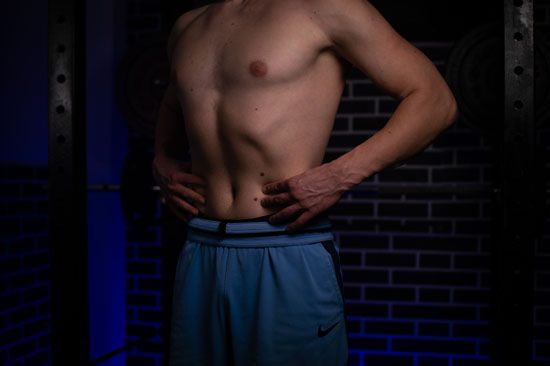
I would also recommend stomach vacuums. That's great exercise if you try to flatten your stomach. Stomach Vacuums
You create a root lock in yoga or horse stance in martial arts. You can check David Deida's book, The Way of Superior Men. He describes this exercise perfectly.
Relax the front of the body, face, shoulders, chest, and belly. Inhale and fill your body with air, and then exhale. You'll want to suck your balls into your body when you exhale like you're about to jump in a cold lake.
Squeeze the butt and pull the belly button in. Hold this for ten seconds if you can. Do this for about ten repetitions. This is very important. Vladimir Yanda, a world-renowned physical therapist, discusses the muscular imbalances in this area. This problem extends throughout your entire body.
My BodyFat and Core
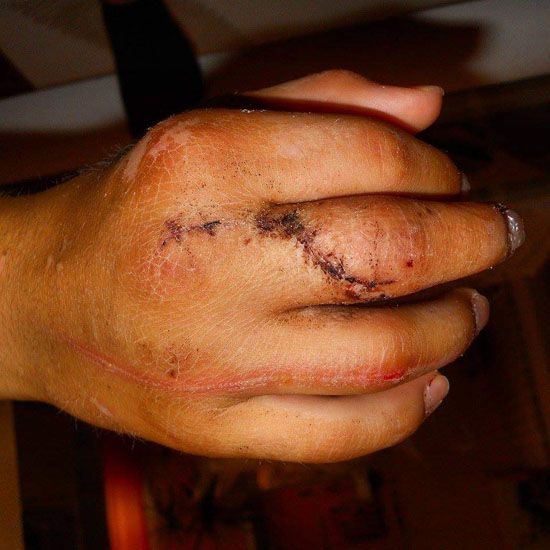
When I fractured my finger doing boxed squats at 16, I fell out of shape and had about 17% body fat. When I leaned down to 8%, I was the leanest in my life.
My friends told me it was hard to lose body fat, which wasn't hard for me, mainly because I am a hybrid of mesomorph and ectomorph, which almost all people with pectus excavatum are.
I was surprised that I was leaner than I had ever been, even thinner than when I played basketball intensely before fracturing my finger.
The problem was that I still had body fat sticking around in the love-handle part of my abdominals. It was frustrating. I did a clean bulk, then I would cut bulk again, then cut again. It took three cycles of this to get rid of my love-handle fat finally.
I am trying to make that we all have stubborn fat problematic areas. No matter how low your body fat percentage is or how properly you train the core, you might still have some fat in the stomach. Don't worry about it. It isn't as important as having a solid and functional core.
The stomach and love handle areas where fat is stored the most and is the last to go away. Don't focus on body fat percentage too much. That is obsessive and not healthy. Have a good relationship with your body.
Carry Yourself Properly
I noticed that some people with pectus excavatum I helped had flared ribs and a pectus pot belly appearance. Even if you build muscle mass in your abs, this problem will make your physique unappealing. I recommend you be highly conscious about your posture and how you carry yourself.
Engage your core and brace properly, and please get rid of the pectus pot belly (anterior pelvic tilt). I will talk about this in the text that comes. Aesthetically this will help you a lot. You'll feel like you're presenting yourself better.
How Often to Train
Do two core exercises at the end of each workout in the gym. I also recommend you do passive core stability movements too.
Different Core Parameters
It depends. Core exercises are usually deployed in three different categories:
- Stability
- Performance
- Aesthetics
However, it is very individual when it comes to performance and stability.
What one person may need to improve their performance and stability, another person will not benefit much from.
How to Build Abs to "Override" Flared Ribs

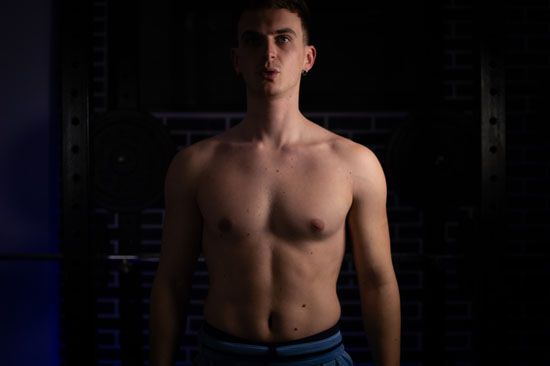
It is easier to talk about aesthetics because it isn't so much individual. We need to work the abs the same as the other muscles. They are muscles like everything else.
The first thing we're talking about in aesthetics is to develop of muscles. The most effective way is to do a full range of motion exercises with a load. One of my favorite exercises for abs is a slow sit-up or roman chair sit-up with resistance.
If leg raises are adequately done, they don't include the hips too much. You must perform them properly to make the abs visible, even with flared ribs and higher body percentages.
However, you shouldn't worry about body fat too much because most of us with pectus excavatum are lean and have a low body fat percentage.
Mind Muscle Connection
Make the connection and feel the ab muscle contracting. It is crucial to feel the abs more than the hips. Go through the range of motion properly, with the proper mind-muscle connection.
Take your time developing a robust recruitment process and concentrate on the abs muscle.
Focus on Form First
This is essential before loading the exercise with weight. The best exercises aren't the best if you can't perform them correctly. This always comes first.
Many people with pectus excavatum can't connect with their abs properly because of their flared ribs. It is rare to see leg raises appropriately performed. The hips are usually more involved.
Focus On Every Single Vertebra
The first thing is to get a perfect setup and learn to articulate every vertebra slowly and controllably. Get this down very well with just your body weight. You will know how to do every ab exercise when you get that mind-muscle connection.
When you do the perfect sit-up and try to roll the spine up off the ground and feel the abs, you should perform every ab exercise, whether on a machine or hanging from a pull-up bar.
Underrated Method for Abs
You can't add too much weight at first and do the exercise correctly because it is very intense. It is hard to do even eight reps that way. If you get good at that and then load it, that's when you'll have popping abs.
This method is very underrated. It is sometimes worthless to do circuits because it can overstress the hips rather than the abs. Even though you can get sore from that, if you learn how to articulate the spine and then load it with some weight for even five repetitions, your abs will grow much more than the circuits meant for endurance, not hypertrophy.
Don't Overcomplicate With Exercises
There are tons of ab exercises for pectus excavatum, where you need just three or four. Perfect the movement for maximal contraction. I like:
- Decline sit-up
- Hanging leg raises
- Ab wheel.
- Physioball crunch
Ab wheels are my favorite exercise when done correctly. You can do active planks and reverse crunch on an incline or physioball crunch.
Physioball Crunches
Sit on a physioball. Push the hips up, round your back around the ball, and slowly crunch around the ball. It is challenging, mainly because most people aren't used to training full range of motion for their abs and compensating with the hips.
Best Rep Ranges
The best rep range to build muscle for all muscles is between one heavy repetition and about 20 repetitions. These are all excellent muscle-building rep ranges. For abs, you won't do well with low reps and heavy weights because it's hard to keep good form.
But lower reps are okay. For example, you can do five heavy resistance repetitions with your abs up to twenty. The goal is to get good resistance and train them in a full range of motion. Most people don't do this.
They work their abs but tend to work them as stabilizers or play a dual role. For example, I rarely see anyone do leg raises appropriately.
The ab function is to bring the pelvis closer to the ribcage. It is a curling lower back muscle.
Abs Are Trained Wrong
Abs are arguably one of the most commonly done wrong exercises. The problem is that even if you have poor form, you look like you're doing them correctly, and you can still feel them working. You won't notice anything wrong with the form, unlike other exercises.
You probably mainly use your hip flexors if you do a traditional sit-up. The abs still work, at least stabilizing and getting slight contractions. It's hard to explain how to do ab exercises well on a blog.
The best thing is heavy low rep ranges if you want to build abs, mainly because nobody does it, and your body isn't used to training in these parameters.
The drawback is that most people don't know how to do a basic setup with their body weight using all their ab muscles. Don't load it with heavy weight without working to activate the abs properly.
How to Load Properly
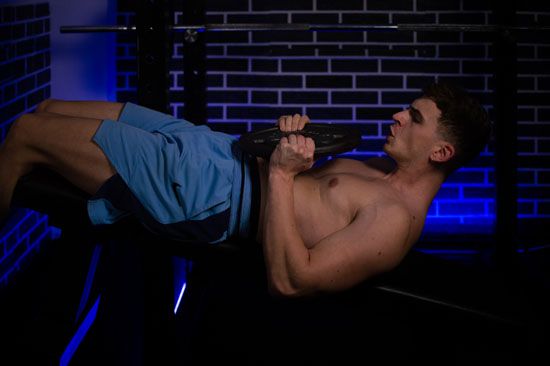
Decline sit-up makes the most sense to load. If you take somebody who doesn't know to work abs properly, get them to do physio ball crunch or a perfect sit-up.
Lay completely straight on your back. Set your body at the torso up. Think of your spine in the vertebra, and try rolling up to every vertebra slowly and controlled. Try doing five of those. That's tricky. Aim to do one perfectly.
That is a great way to explain low-rep heavy loading. You can use a rubber band to assist on a squat rack or feet. Use the rubber band to help you in the perfect articulation in the spine rolling up. Do this perfectly for low reps slowly. You'll feel a massive sensation in your abdominals.
I worked out my core for years until I discovered this "secret." I was always jealous of people with abs who always showed without flexing. It wasn't about body fat percentage. Skinny people with abs are widespread.
Importance of Core for Posture
Most people with pectus excavatum have dysfunctional postures, such as anterior pelvic tilt. Your hips tilt forward, and your butt sticks out. This is also known as a pectus pot belly. Kyphosis (rounding of the upper back and shoulders) is also very common as people with pectus excavatum try to hide their deformity by covering it with their arms and shoulders, causing a slouched-over posture.
When you have a muscular imbalance, it tends to show up and affect other body areas in your body. You probably don't just have an imbalance in the lumbopelvic rhythm or imbalanced feet or shoulders. The imbalances are rarely just in those regions. It is going to manifest in other areas of your body.
When you have anterior pelvic tilt, your body will naturally follow the hips, so your body will incline. Your posture will appear like you are looking down at the ground. Your body compensates by dropping the shoulders down and hyperextending the neck. When your body compensates for one muscle imbalance, it creates plenty of other problems at other places.
Vladimir Janda
Dr. Vladimir Janda said that 90% of muscular imbalances start in the hips, lower abdominals, low back. There are plenty of reasons for this. I can give you some tips on correcting the root cause of the problem. The problem is located in the lumbopelvic area of the hips.
Pectus Potbelly Problem
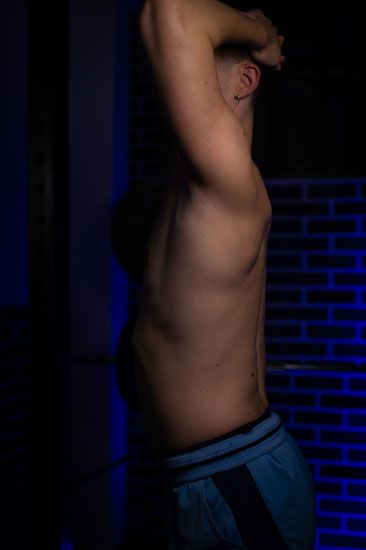
If you have an anterior pelvic tilt (pectus potbelly), you probably have a set of tonic and phasic muscles. Some muscles are overdeveloped and strong, perhaps because the nervous system creates a lot of force in that muscles.
An energy imbalance is pumped into those muscles compared to those on the opposite side of that joint. We call that phasing.
The nervous system's drive to the opposite ends is very low and understimulated. You aren't getting enough "electricity" pumped to these muscles. This is called lower crossed syndrome: tight hip flexors and tight low back. When hips become tight, they cause hyperextension.
That's coupled with tight, strong lower back muscles. Muscular strength is absent in the abdominals and upper hamstrings.
If you reverse that anterior pelvic tilt, your hips will tuck under, which is associated with pulling down your hips by the hamstrings and pulling your hips with your deep abdominal wall. That's very important.
How to Correct Core Imbalances
If you correct the imbalances, you'll have a perfect posture that increases your vitality and sexual force. That muscular imbalance, if corrected, will lead to more energy.
In our case, we have to numb the nervous system holding on to the tonic muscles, the hip flexors, and the lower back.
Hip Flexor Stretch
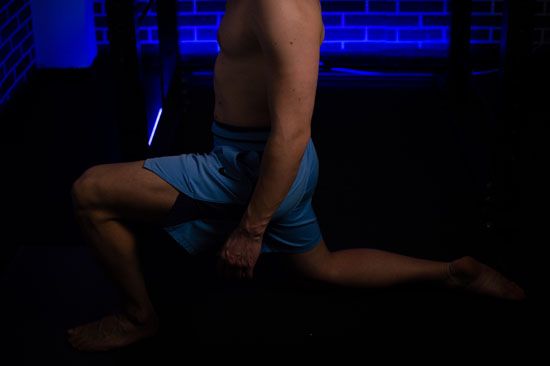
We need hip flexor stretch for this. It would be best if you also stretched the lower back area. Stretching the muscles before exercising is important.
Hamstring Strengthening
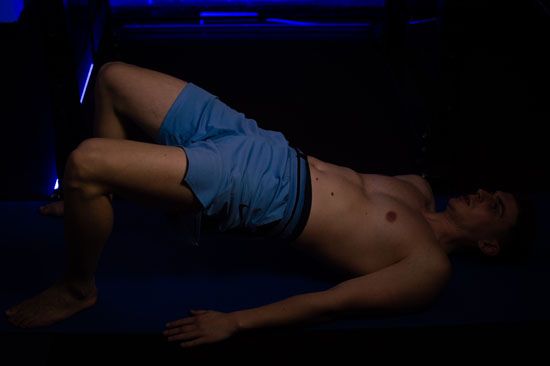
It would be best to strengthen the upper hamstrings and the deep abdominal wall.
You can strengthen the upper hamstring exercises by doing the following:
- Glute-ham raises
- Good mornings
- Stiff-legged deadlifts
Core Strengthening
Next, the real thing that you need to strengthen and correct the muscular balance is the core and deep abdominal wall.
This area is rich with life force, and all stem from the glands, sexual glands in this area. This area stimulates a lot of anabolic hormones. This is not all about standing upright correctly but also promoting the production of anabolic hormones.
Muscular imbalances prevent vital energy to produce. If you have this muscular imbalance, you may probably have other imbalances.
I will recommend you an exercise that I highly recommend. A lot of bodybuilders also practice this exercise.
7 Sources
- 10 Signs You Have a Weak Core Strength - How to Fix It [Internet]. DMoose.
[cited 2022 Dec 3]. Available from: https://www.dmoose.com/blogs/workouttraining/10-signs-of-weak-core-strength - Beers E. Are Your Abs Strong, or Are Your Hip Flexors Doing the Work?
[Internet]. BarBend. 2020 [cited 2022 Dec 3]. Available from:
https://barbend.com/hip-flexors-abs-work/ - The Way of the Superior Man: A Spiritual Guide to Mastering the Challenges of
Women, Work, and Sexual Desire by David Deida [Internet]. [cited 2022 Dec 3].
Available from: https://www.goodreads.com/book/show/79424.The_Way_of_the_Superior_Man - How to Build the Mind-Muscle Connection for Size Gains and Growth [Internet].
[cited 2022 Dec 3]. Available from: https://www.menshealth.com/fitness/a19526514/mind-muscle-connection/ - ABSolutely Better ABS! Abdominal Training Myths That Will Ruin Your Results |
Muscle & Strength [Internet]. [cited 2022 Dec 3]. Available from:
https://www.muscleandstrength.com/articles/absolutely-better-abs-trainingmyths-that-will-ruin-results.html - The Janda Approach to Chronic Pain [Internet]. [cited 2022 Dec 3]. Available
from: http://www.jandaapproach.com/ - Anterior pelvic tilt: Fixes, causes, and symptoms [Internet]. [cited 2022 Dec 3].
Available from: https://www.medicalnewstoday.com/articles/317379


